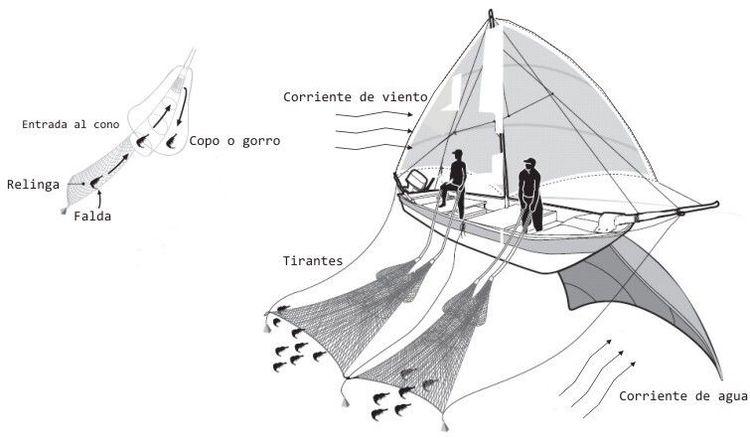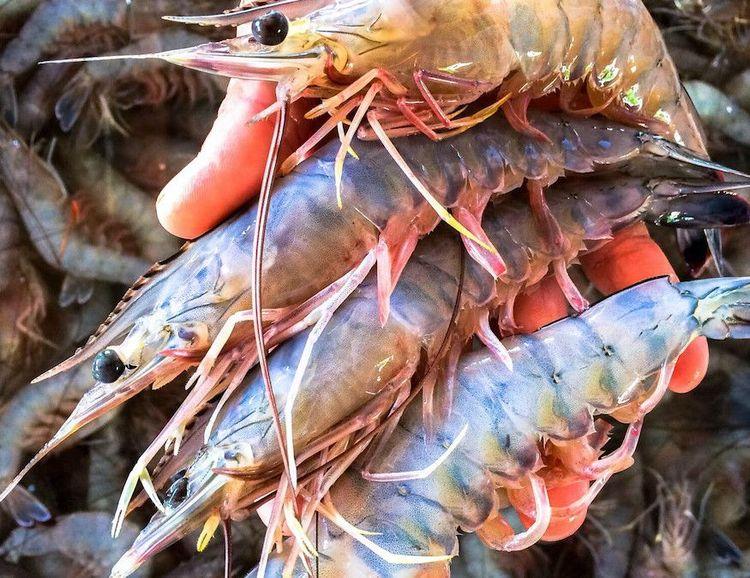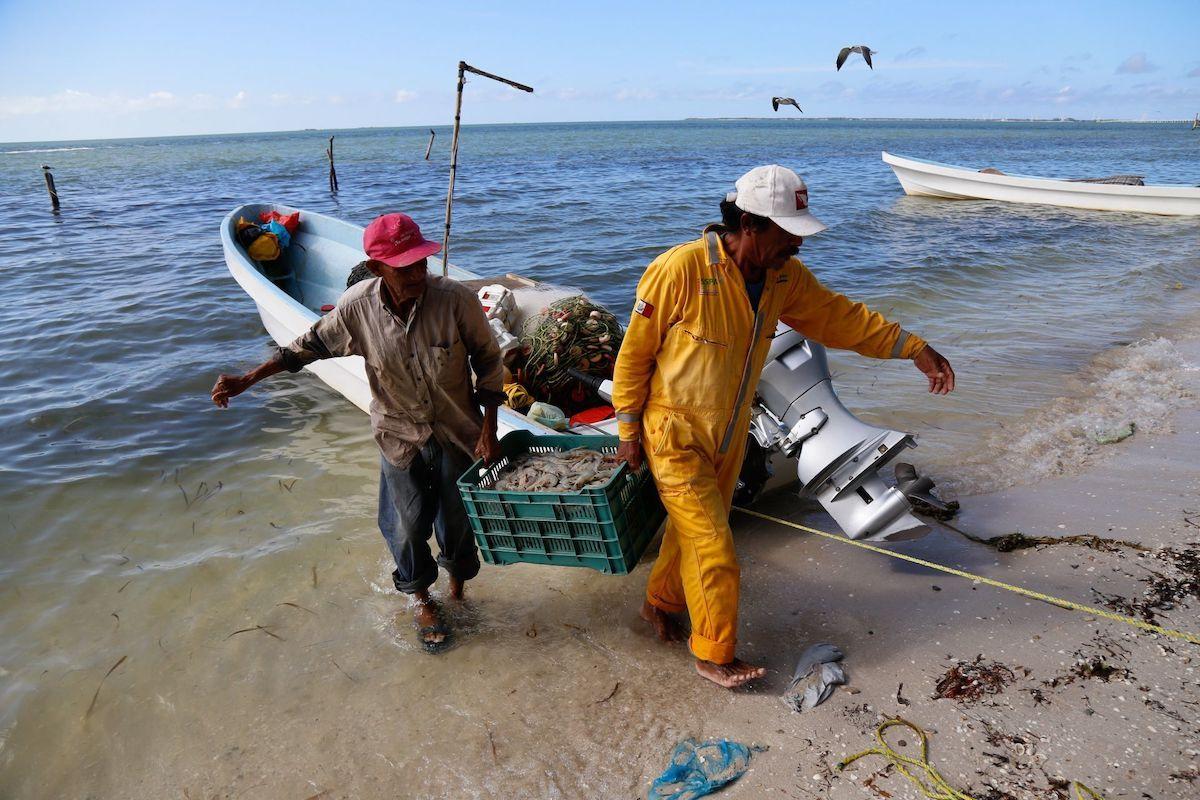When Jesús Ramón Valenzuela was 8 years old, and accompanied his father in his work as a fisherman, there was a change in shrimp catching in Altata, Sinaloa. Some younger fishermen had arrived from Santa María Bay with fishing nets that, they said, were useful for maintaining production with less effort.
Forty years later, the use of suriperas has spread to coastal communities in the region such as Altata, Dautillos, Yameto, La Reforma, Costa Azul, El Tetuán, Las Aguamitas, and others.
This is a fishing gear for shrimp that operates mainly in shallow waters such as marshes and bays. The nets are attached to one side of the boat and at their narrowest end they have funnels, known as slaughterhouses, that concentrate the catches.
“What happened with the suriperas is that because of their ease of handling, more people started working in fishing. There was an increase in members,” said Jesús Ramón Valenzuela, who is a member of the Puerto Altata Fishermen's Union Cooperative in Sinaloa.
Although suripera is considered a type of trawling, its use has been certified for sustainability by Fair Trade since 2016 and by the Seafood Watch program since 2017.
Certifications have been granted because it is a more selective method that is reflected in low bycatch rates. Contrary to what happens with gillnets, which in the Gulf of California affect species such as the vaquita marina and the loggerhead turtle, in addition to leaving damage to the seabed.
It is estimated that the proportion of accompanying catch in suriperas is lower per kilo of shrimp, compared to trawls where they are up to six kilos per one of shrimp, or gall nets of up to 15 incidental kilos per one of shrimp, according to a study by the Autonomous University of Baja California.
“To obtain sustainability certification, managers come and check that it is selective, that it does not pollute, that it does not have accompanying fauna,” Valenzuela explained.
Although suriperas also have the support of environmental organizations, their use is still being debated among people in the fishing sector because it continues to be a trawling method.

Graphical description of the suriperas. Source: Compendium of Environmental Statistics of the Ministry of Environment and Natural Resources (Semarnat).
Between trawling
With his entire life as a fisherman, Jesús Ramón remembers that the change to surpluses in the 80s caused conflicts with the southern area of Altata, Sinaloa.
“There were very strong conflicts, they even came with blows, because they didn't want them to be used. They said we were going to finish the seabed, as is the case with deep sea trawling,” Jesús recalled.
It was in 1985, when the acceleration in shrimp capture motivated the change of fishing gears and the implementation of the suripera ones, since it represented a greater possibility of work for communities.
Currently, the National Fisheries and Aquaculture Commission (Conapesca) reports that, in the permits and concessions granted for the use of trawls, 47% are concentrated on larger vessels.
In the case of coastal fishing, there are only 615 artisanal vessels that obtained permits for 2021 across the country. In Sinaloa, there is no panga that uses trawls with permission.
“(The suriperas) are mainly used for smaller boats, for coastal fishing, since their traditional gill nets for shrimp have mainly affected the vaquita marina, so the alternative method is being sought,” explained Alejandro Olivera, from the Center for Biological Diversity in an interview with Causa Natura Journalism.
In June of last year, the shrimp embargo by the United States government banned the exports of Mexican fishermen to its territory. The problem began with the lack of DETs (Sea Turtle Excluding Devices) that are used in trawls for deep-sea fleets.
However, during the negotiations, the United States Department of State pointed out a possible impact on sea turtles due to the use of other nets such as suripera nets.
“The suriperas do have an impact, but it is much smaller than a traditional drag system, which carries rollers, chains and, due to its dimensions, sweeps a larger area of the seabed,” said Alejandro Olivera.
For this reason, the suriperas have remained the most sustainable option so far. According to organizations such as Oceana and Environmental Defense Fund (EDF) in Mexico, its use also reduces fuel pollution by taking advantage of tidal or wind currents and allows accompanying species to be returned to the sea.
“That's why we have the certification, we give it traceability, the engine is turned off, they've given us courses. It's not the same as with offshore ships, our network is selective and only grabs shrimp,” added Jesús Ramón Valenzuela.

In October of last year, Conapesca reported that the U.S. shrimp embargo would be lifted. Photo: Conapesca
Pending technologies
Although suriperas are an option to trawling, they are only useful for catches by coastal fishermen. In addition to Sinaloa, its use is also being implemented in the Gulf of Santa Clara, in Sonora, and in San Felipe, Baja California.
On the other hand, alternatives to mitigate the impacts generated by trawls on larger vessels are still pending in the fishing sector and, so far, only technologies such as DETs are available.
When asking the reason for the lack of a similar alternative measure for deep-sea fishing, Alejandro Olivera points out that trawling has been a technique used for centuries and efforts have focused on improving its performance, as well as avoiding marine fauna.
Therefore, creating alternative methods, as has happened with coastal fishing, is an issue that is still pending.



Comentarios (0)